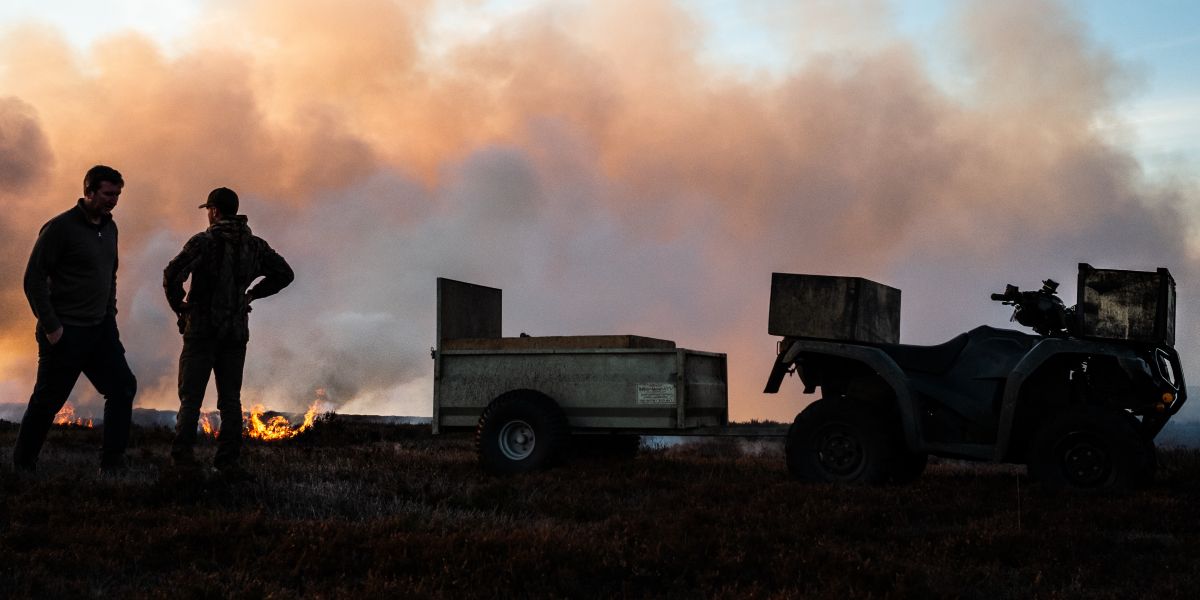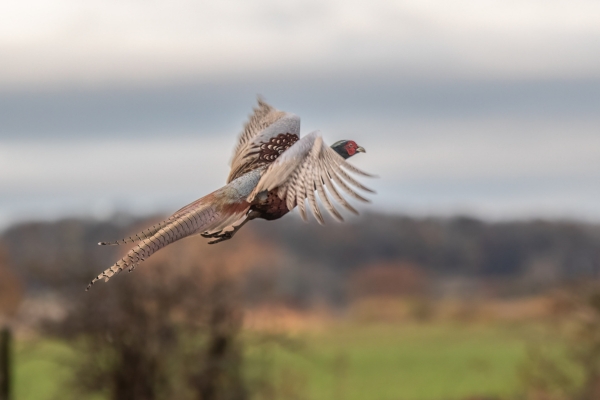
Coming together for a cause: the 5 Regions Charity Working Test
The gundog world is uniting for the 5 Regions Charity Working Test, a national event created to raise awareness of mental health challenges in rural communities.
Get information on the legal shooting season for mammals and birds in the UK.
Apply for funding for your project or make a donation today
Comprehensive information and advice from our specialist firearms team.
Everything you need to know about shotgun, rifle and airgun ammunition.
Find our up-to-date information, advice and links to government resources.
Everything you need to know on firearms law and licensing.
All the latest news and advice on general licences and how they affect you.


There are several clear winners as a result of controlled heather burning in our upland environments, as Alex Farrell explains.
Cool burning is a traditional land management practice used in moorland and upland areas of the UK. Also known as muirburn or controlled heather burning, it is used primarily to manage heather (Calluna vulgaris).
The practice involves trained gamekeepers setting controlled, quick and cool burns on patches of old heather and other scrubby vegetation. This creates a mosaic of differently aged plants, while not burning the understory, soil or underlying peat.
The burning of vegetation can seem counterintuitive to maintaining healthy ecosystems. However, research shows that, when responsibly managed, heather burning which follows the law and codes of practice can bring numerous environmental, ecological and economic benefits.
One of the primary benefits of cool burning is that it stimulates new vegetation growth. Heather is a hardy plant well-suited to poor, acidic soils found in moorland areas. However, over time, older heather becomes woody and less nutritious, making it unpalatable for our iconic and endemic upland species, the red grouse, for which heather is a key component of the diet. Controlled burning removes this woody growth, allowing the heather to regrow more tender, nutrient-rich shoots that provide food for red grouse, grazing animals and insects.
Moreover, cool burning encourages plant diversity on moorlands. When older, overgrown heather is removed, space is created for a variety of grasses, mosses and other upland plants, such as bilberry, to establish. This diversity supports a more complex ecosystem, which in turn benefits the wildlife that depends on these habitats. For example, curlew, golden plover, lapwing, merlin, kestrel and the mountain hare find food and shelter in the varied vegetation created by periodic burns.

Controlled, cool burning is an effective way to reduce the risk of uncontrolled wildfires. Overgrown, dry scrubby vegetation is highly flammable, especially in periods of drought. Uncontrolled wildfires can spread quickly and burn at extremely high temperatures.
These fires can burn into the soils, releasing huge amounts of carbon into the atmosphere. They can also cause widespread damage to habitats, property and even human life. By reducing the amount of flammable vegetation, controlled burns decrease the risk of accidental fires.
Controlled heather burning aligns with the concept of ‘fuel load management’. By keeping growth at a manageable level, cool burning prevents excessive build-up of dry vegetation. This ensures the safety of local communities and reduces the financial and environmental costs of uncontrolled fires. Burning creates fire breaks that can slow the spread of wildfires so they can be dealt with more easily.
Red grouse are dependent on young heather shoots as a primary food source. By promoting new growth, controlled burning helps sustain grouse populations. This is important for ecological reasons, as grouse are a species unique to the UK. They are also important for rural economies, as shooting contributes significantly to both the local economy and social wellbeing.
Additionally, moorland managed with controlled burns provides varied habitats for a range of bird species. Cool burning creates a mosaic pattern across the landscape, with patches of new growth interspersed with older heather and other vegetation. This patchwork structure provides nesting sites, protection from predators and diverse feeding opportunities, enhancing habitat quality and supporting bird diversity.
Controlled heather burning can enhance the health and resilience of moorland soils. When heather is burned, the ash produced contains essential nutrients which are then absorbed back into the soil. This benefits not only heather but other moorland plant species as well, fostering greater biodiversity.
Moreover, while there is debate surrounding carbon release from burning, studies indicate that periodic, low-intensity burns conducted on a rotational basis can lead to healthier, more resilient peat soils. Peatlands are significant carbon stores, as they trap carbon within layers of dead plant material. By promoting healthy plant growth, controlled burning helps sustain peat formation and enhances long-term carbon storage. Research suggests that the benefits of controlled burning outweigh the small, temporary release of above ground carbon during burns.
Controlled burning also creates charcoal in the part-burned woody heather stems it leaves behind. Charcoal is permanently locked away carbon and the only way to release it is by burning it. Safe controlled burns leave the leaf litter and understory untouched. However, a wildfire which burns into the peat will release all of that stored carbon.
For centuries, upland communities have relied on controlled burning as a sustainable land management practice that remains vital to rural economies today. This method supports traditional sheep farming, an essential part of the cultural and economic fabric of upland regions.
Controlled burning enhances pasture availability by encouraging the growth of nutrient-rich forage for livestock. Additionally, tourism linked to these practices contributes income for maintaining local infrastructure, benefiting nearby communities.
When conducted responsibly and with ecological sensitivity, controlled cool burning is a valuable tool for moorland management. While debate continues about the long-term impacts of burning, careful management and adherence to best practices have shown that heather burning can yield substantial ecological and economic benefits. As we navigate climate change challenges, controlled heather burning may prove essential in preserving moorland ecosystems.
Want to read more about grouse and the moorland landscape? Head to our upland management pages here.


The gundog world is uniting for the 5 Regions Charity Working Test, a national event created to raise awareness of mental health challenges in rural communities.

Two BASC-sponsored target shooting athletes have been selected for the British Shooting World Class Programme.

BASC is inviting all shoot owners, managers and gamekeepers affected by changes to gamebird releasing in England to register for a free webinar.
Sign up to our weekly newsletter and get all the latest updates straight to your inbox.
© 2025 British Association for Shooting and Conservation. Registered Office: Marford Mill, Rossett, Wrexham, LL12 0HL – Registered Society No: 28488R. BASC is a trading name of the British Association for Shooting and Conservation Limited which is authorised and regulated by the Financial Conduct Authority (FCA) under firm reference number 311937.
BASC Direct Ltd is an Introducer Appointed Representative of Agria Pet Insurance Ltd who administer the insurance and is authorised and regulated by the Financial Conduct Authority, Financial Services Register Number 496160. Agria Pet Insurance is registered and incorporated in England and Wales with registered number 04258783. Registered office: First Floor, Blue Leanie, Walton Street, Aylesbury, Buckinghamshire, HP21 7QW. Agria insurance policies are underwritten by Agria Försäkring.
If you have any questions or complaints about your BASC membership insurance cover, please email us. More information about resolving complaints can be found on the FCA website or on the EU ODR platform.